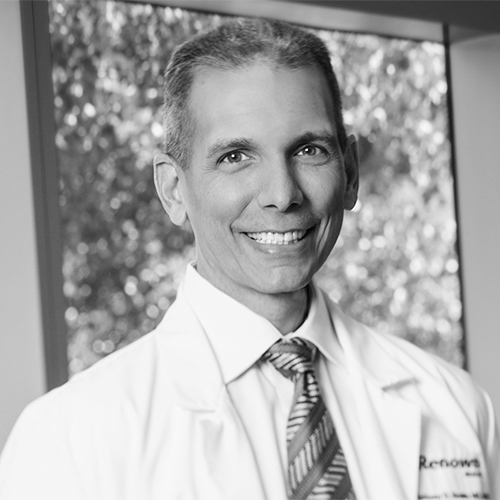Over the course of a forty-three-year career in healthcare, Larry Fitzgerald has seen too many changes to count—including some for which he is responsible. As a result of his expertise in business development, since 1999, the University of Virginia Health System (UVHS) has added four imaging centers, quadrupled its number of dialysis centers, and introduced four off-campus infusion centers, along with three community hospitals and three stereotactic radiosurgery joint ventures.
Today, Fitzgerald handles finance and business development for UVHS, working through one of the most dramatic transformations he has faced during his tenure there: making improvements to meet the requirements of value-based reimbursement.
While not alone with navigating the new formulas and expectations, UVHS does face some unique challenges. Charlottesville, Virginia, is a rural location with a primary and secondary service population of approximately two million. Most academic health centers require a population nearly five times larger to support similar specialized care.
UVHS is also a “rescue hospital,” providing quaternary care for the sickest patients and those who experience complications during what may have begun as routine, prescreened, preplanned procedures or treatments. This is part of the facility’s mission—and something to which its professional staff has committed its careers.
“Our goal is to focus on patient safety and performance improvement in order to keep care affordable.”
However, such academic medical centers tend to not perform as well as primary and secondary care centers in today’s metrics- and ranking-based environment. The rural setting also means there are no other specialized local care providers to “dilute” the number of high-risk or financially insecure patients. Approximately 18 percent of UVHS’s business is Medicare or Medicaid.
Although he is a finance specialist, Fitzgerald now works directly with medical staff to help redesign clinical operations according to lean service practices.
This means developing delivery systems around patient needs, rather than around the traditional organization of a typical medical school. The approach enables staff to address issues in real time, identify root causes, and immediately introduce solutions to make the hospital safer, more efficient, and more effective.
To illustrate, Fitzgerald points out that the average cost for treating a Medicare patient is $6,800. But if a patient contracts an infection in the hospital, the cost goes up to $20,000. “Our goal is to focus on patient safety and performance improvement in order to keep care affordable,” he says.
STAT SHEET
18%
of UVHS’s business is Medicare or Medicaid
42%
reduction in in-patient catheter-associated urinary-tract infections since launch of Be Safe
294%
increase in cost of treating Medicare patients if they contract infections in the hospital
A major source for these improvements is UVHS’s new “Be Safe” initiative. Dr. Tracey Hoke, chief of quality and performance improvement, explains that the program involves daily morning huddles at which performance indicators—like infections, falls, team-member injuries, or patient deaths—are reported and reviewed. Issues that cannot be resolved at the local level are shared with the chief nursing officer, chief medical officer, Hoke herself, and other key executives for review. The appropriate staff members then follow up on-site immediately.
In one instance, the executive team learned of a patient fall in the operating room due to a malfunctioning operating table. That room was immediately closed, surgeons and the table manufacturer were contacted, and a new table was in place by ten o’clock the next morning.
“In the old environment, we might not have heard about the incident for weeks or months,” Hoke says. “With Be Safe in place, we are able to put patient safety above all other priorities, identify the problem, and deploy resources for a solution all in less than twenty-four hours.”
Even with all the improvements brought about by Be Safe—including a 42 percent reduction in in-patient catheter-associated urinary tract infections—there are some metrics that are extremely difficult to improve.
For example, patient surveys, which are among the nearly 500 measures on which the Affordable Care Act (ACA) and other benchmarking agencies assess performance, often indicate high noise levels. But as Fitzgerald points out, it’s difficult to maintain a quiet environment in an academic health center that is responding to codes and treating trauma cases throughout the night.
Hoke says that with so many different benchmarks now being applied to quality of care and reimbursement, UVHS’s efforts are focused primarily on those that are most important to patients. “The level of the patient experience is important to us, regardless of potential ACA assessments. An excellent patient experience, in terms of both service and care, represents what we want to be known for as an organization,” she says.
As improvements ramp up and the federal rankings progress through their three-year rolling averages, Fitzgerald says that all of the benchmarks that have been achieved over the last two years will begin to be more accurately reflected in UVHS’s performance results.
These include the benefits from initiatives like its Home Monitoring Program, which introduced the use of technology to monitor vital signs of patients at home after being discharged following heart failure and other readmission conditions that are penalized by Medicare.
Call-center staff members monitor readings and communicate regularly with patients, enabling immediate intervention for emergencies—or in cases of medication noncompliance.
Readmission rates for these patients at UVHS are down more than 35 percent.
As it leverages the university’s extensive telehealth network for greater collaboration among care teams—including staff in the newly formed post-acute care division—UVHS is in position to keep improving. Fitzgerald indicates that this group will help manage quality and costs across the full continuum of care: something that wasn’t possible in the past.
“The new division is a tremendous opportunity for us to be actively engaged in ensuring the best possible service delivery even after discharge,” he says. “In addition to the impact it will have on controlling costs, it’s all part of our mission to provide the right care in the right place at the right time.” AHL

